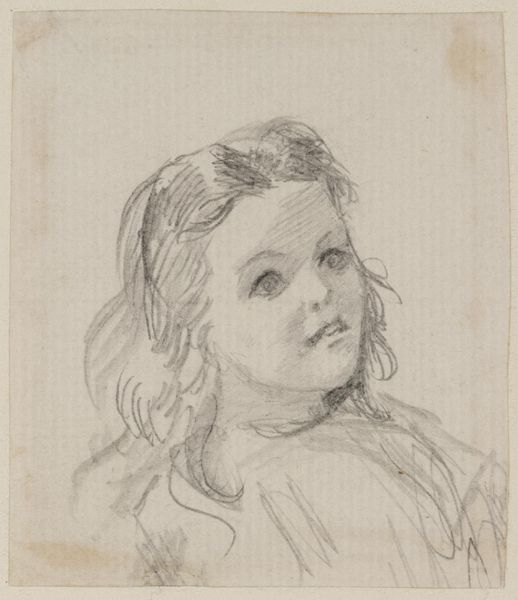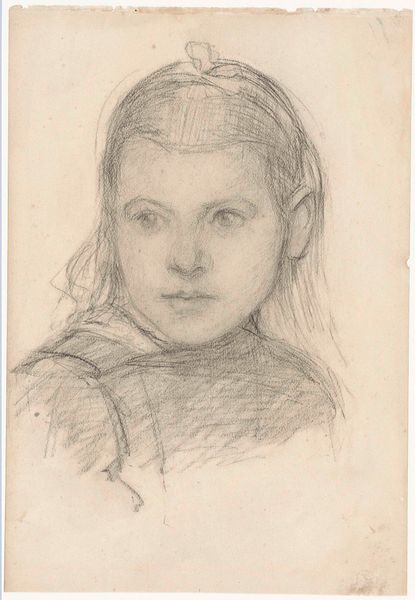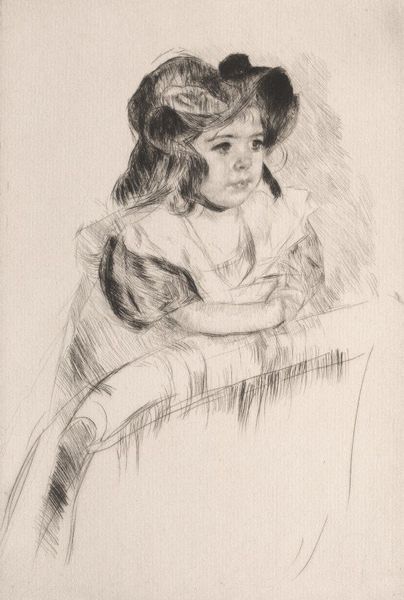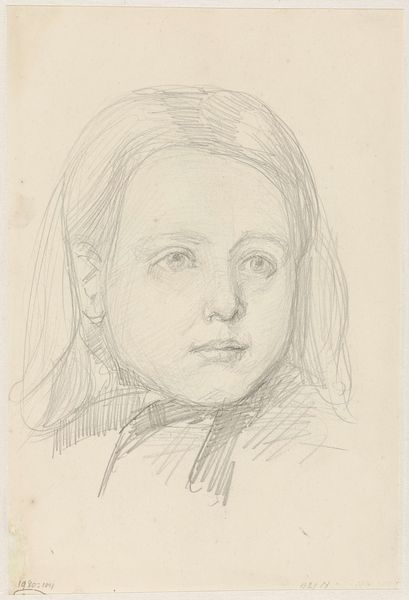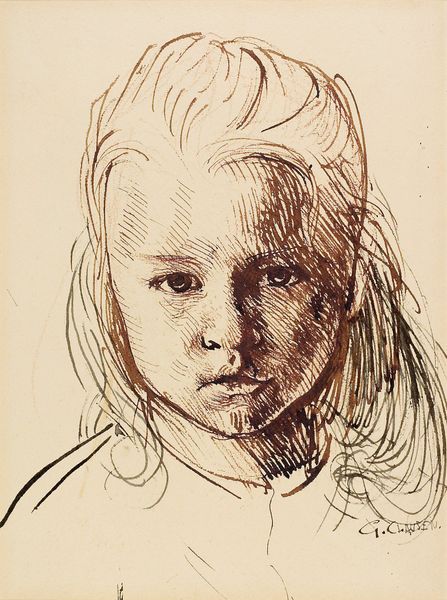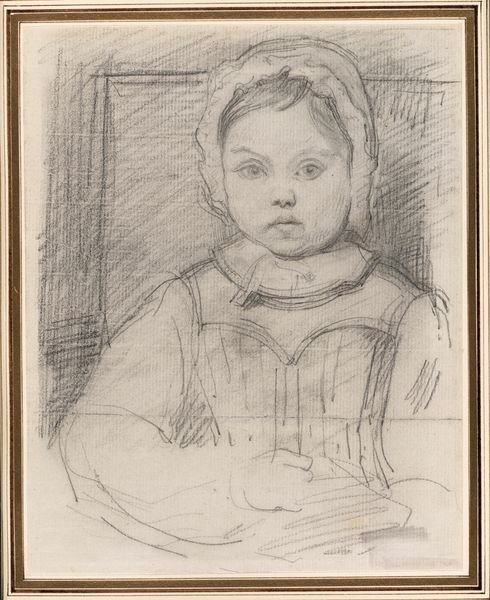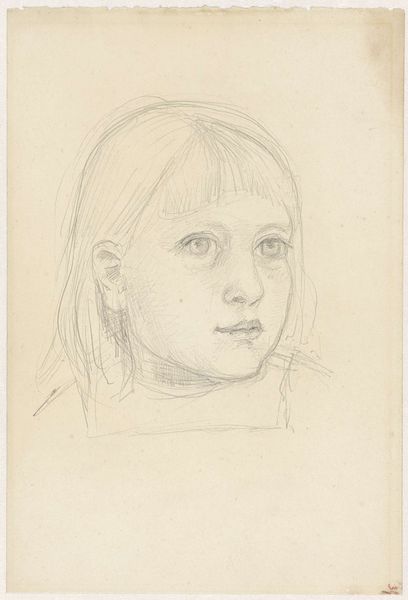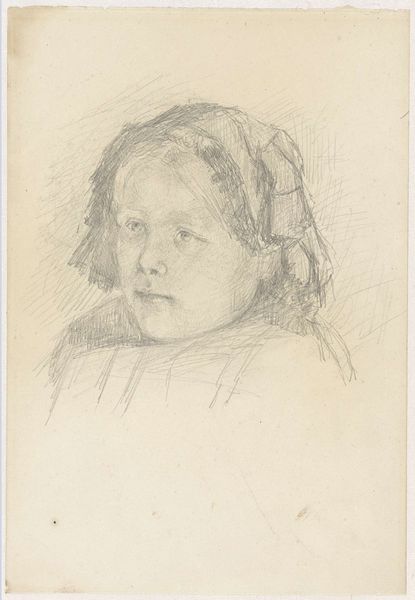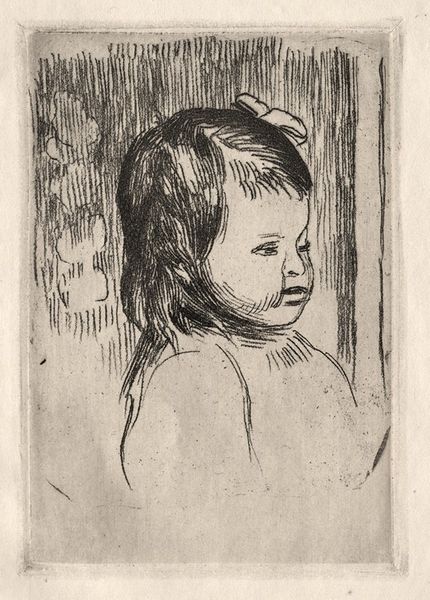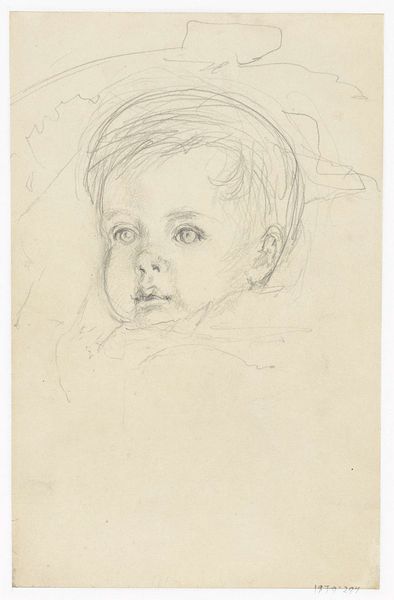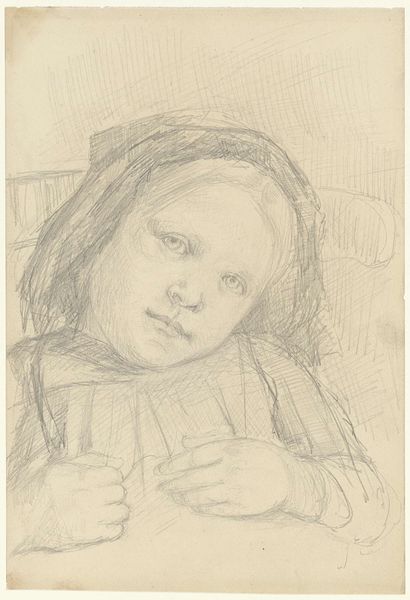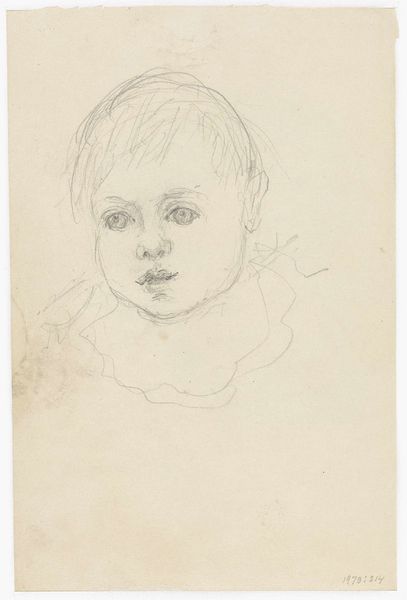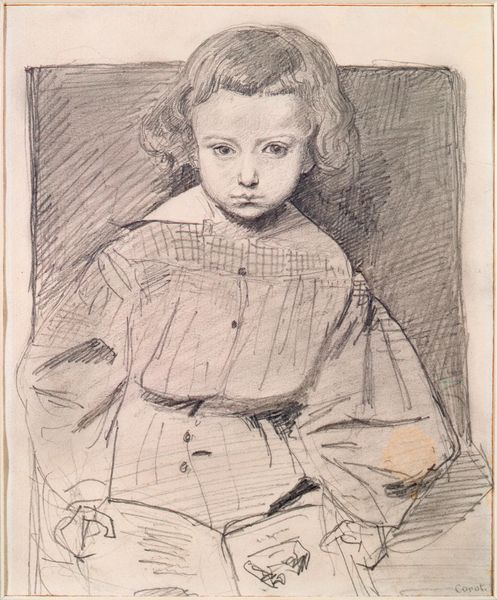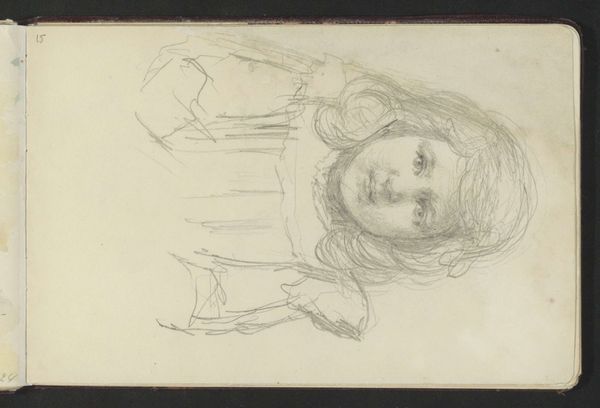
drawing, pencil
#
portrait
#
pencil drawn
#
drawing
#
dutch-golden-age
#
impressionism
#
pencil sketch
#
pencil drawing
#
pencil
#
portrait drawing
#
realism
Dimensions: height 308 mm, width 209 mm
Copyright: Rijks Museum: Open Domain
Curator: The first thing I notice is the stark simplicity. The pencil strokes create this wonderfully vulnerable image, a portrait laid bare in its construction. Editor: I’m immediately drawn to the child's gaze; there's a gentle sadness that reminds me of similar portraits capturing childhood during industrial shifts. Curator: Exactly, and that context is key! This piece, “Meisje, ten halven lijve, van voren," a pencil drawing by Jozef Israëls dating from 1834 to 1911, offers insight into representation during periods of social upheaval. Consider how art serves to both document and subtly critique its time. Editor: The simplicity lends itself to broader interpretations, too. Pencil drawings possess this raw, almost archetypal quality, and her almost too big eyes reflect ancient concepts of childhood innocence… but innocence tinged with melancholy. Is that the influence of his Jewish identity perhaps, filtered into an understanding of suffering? Curator: That's an important consideration! Israëls’ position as an artist from a marginalized background allows for interpreting elements of social critique alongside notions of fragility of identity, particularly that of children within the Jewish community during this period of emerging nationalist sentiment. The artwork, located here at the Rijksmuseum, serves to illustrate an emerging aesthetic shift and an attention to representing various marginalized members of the community. Editor: Indeed, the rapid sketches almost make me think of fleeting moments, echoing the temporal nature of childhood itself, that fleeting glimpse of what might be. A universal symbol rendered in very specific terms. Curator: This piece makes me consider artistic agency in representing individuals facing socio-economic challenges. How does his drawing negotiate or perhaps challenge those constraints of identity? Editor: Its power lies precisely in that ambiguity. It's a symbol, certainly, but it's also a portrait of an individual, of the specific vulnerability captured. Curator: Reflecting on it, this drawing prompts critical thinking on the complex dynamic of gender and representation through the ages and art history. Editor: Yes, and for me, it emphasizes how the symbolism embedded in the simplest of portraits, like this girl’s image, can tap into those fundamental human experiences, resilience, and vulnerability.
Comments
No comments
Be the first to comment and join the conversation on the ultimate creative platform.
